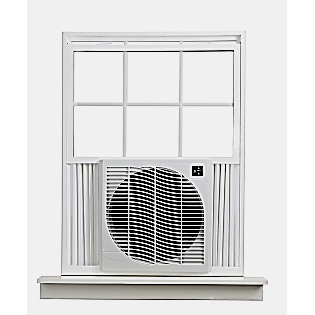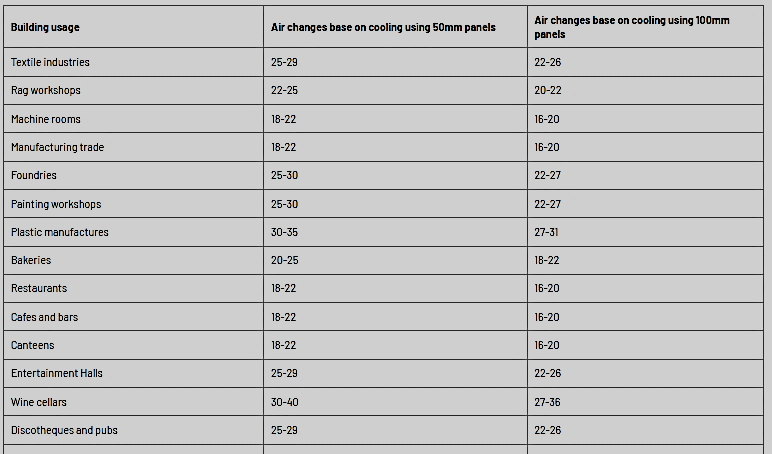What Size Evaporative Cooler Do I Need?

Evaporative Cooling is a great budget and environment-friendly cooling option that many people living in dry areas in Australia go for. It’s also known as the ‘desert cooler’. If you are also planning to buy an evaporative cooler, allow us to help you make a well-informed decision.
Working of an Evaporative Cooler
The working of an evaporative cooler is quite different from a traditional air conditioner. While an air conditioner throws cool air inside and hot air outside, an evaporative cooler uses the natural phenomenon of evaporation-based cooling. This is the reason why it is cheap to buy, operate and maintain, compared to a traditional air conditioner. Moreover, an evaporative cooler is better for the environment, unlike air conditioners, even though air conditioners offer better cooling. However, if you live in a dry environment, an evaporative cooler is the perfect cooling option for you as these coolers work best in dry environments.
Deciding the required size of Evaporative Cooler
So, now that you have decided to buy an evaporative cooler, there are several things you have to bear in mind. First of all, they aren’t rated based on refrigeration capacity like air conditioners are. So, you won’t be seeing evaporative coolers that are rated 20KW or 30KW. Instead, evaporative coolers are rated in cubic feet per metre, or CFM. Evaporative coolers are rated according to the amount of air they deliver. Depending on the climate, manufacturers recommend around 20 to 40 air changes per hour.
Now, to decide what size of an evaporative cooler is suitable for your house, there is a rule of thumb that can help you out. First of all, you have to measure the square footage of the room that you want to cool. To get the square footage of your room, measure the length and width of your room. Once you get those measurements, then multiple your room’s lengths with your room’s width to get the square footage of your room. Then, you have to measure the height of your ceiling as well. After doing that, multiple your room ceiling’s height with the square footage you just calculated. Divide the result by 2 and you will get the CFM rating required for 30 air changes per hour according to the size of your room or portion.
Keeping that in mind, if 500 CFM per square foot is being provided, then for a 10 feet ceiling, you will be getting 30 air changes per hour. And even if you don’t feel like doing all these calculations, most of the manufacturers include a guide with their products that tell how much space units that specific model of an evaporative cooler is capable of cooling.
In the below table, you can see the number of air changes per hour required by different environments:
You can also contact ComfyHome to know what’s the best evaporative cooler for your house, because, let’s face it, having suggestions and buying the products from the market leaders is always going to benefit you.
Types of Evaporative Coolers
Now, that it has been discussed what size of an evaporative cooler is required by your house, let’s discuss the type of evaporative coolers available out there.
-
Portable Evaporative Coolers
If you are a person who changes his residence now and then, it’s better to buy a portable evaporative cooler so that you can carry it wherever you’re going. It is not super portable, but it can be carried and you can position it anywhere without an issue. Portable evaporative coolers are normally used in warehouses and manufacturing plants where things can get hot. You can also use it in your house, but do remember that these coolers don’t have a lot of range, so, these coolers are just for spot cooling, not for cooling your room the way a normal evaporative cooler would.
-
Window Evaporative Coolers
Just like window air conditioners, window evaporative coolers are also a thing. These coolers are fitted on windows and are normally used in houses and warehouses. But do remember that the window needs to be of a specific shape because window evaporative coolers cannot fit properly on irregularly shaped windows. The great thing about these coolers is that they can be stored during winters when the coolers are not required. But do empty the water tank to avoid the growth of mould, mildew and other microorganisms.
-
Central Evaporative Coolers
These are the most effective evaporative coolers of all types and they are permanently installed in your house or warehouse. These coolers are connected to the building’s ductwork and circulate air through it. Down-discharge evaporative coolers are often positioned on the building’s roof and side-discharge evaporative coolers are installed on building sides so that they can be easy to maintain.
Now, Central Evaporative Coolers come in two basic designs:
-
Multiple-inlet Evaporative Coolers
These evaporative coolers have lowered down inlets on multiple sides (3 or 4 sides in most cases). Hot air enters the system through these inlets and passes through thin, wet, fibrous cooling pads and after this process, the temperature of the incoming air falls.
-
Single-inlet Evaporative Coolers
In this system, the air is allowed through a single inlet. The air then passes through a thin, wet, honeycomb-like pad to get cooled. Because single-inlet central evaporative coolers have only one inlet to let the surrounding air in, they use a larger blower fan as compared to multiple-inlet evaporative coolers. This is the reason why single-inlet evaporative coolers have better airflow and because the pads are a lot thicker than the pads of a multiple-inlet system, the pads hold more water, hence, the cooling is also better in these evaporative coolers.
Evaporative Coolers are cheap and environment friendly and it’s recommended to anyone who lives in a dry environment, looking for a nice cooling option. And through this post, we hope that your confusion regarding evaporative coolers might have been cleared. Now, you can make a more informed decision about what size and type of evaporative cooler are the best for your house or workplace.








